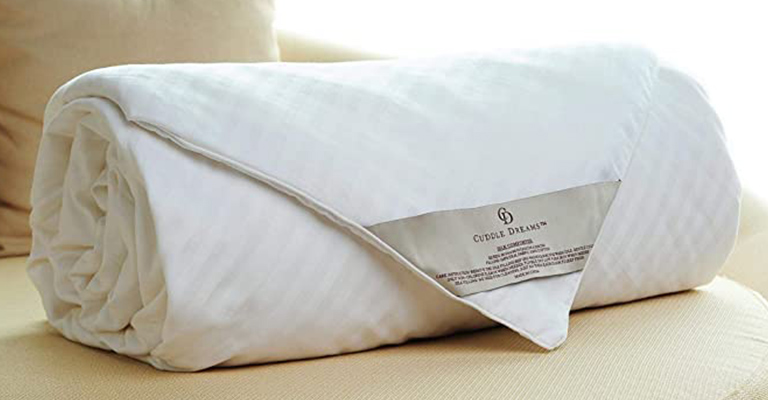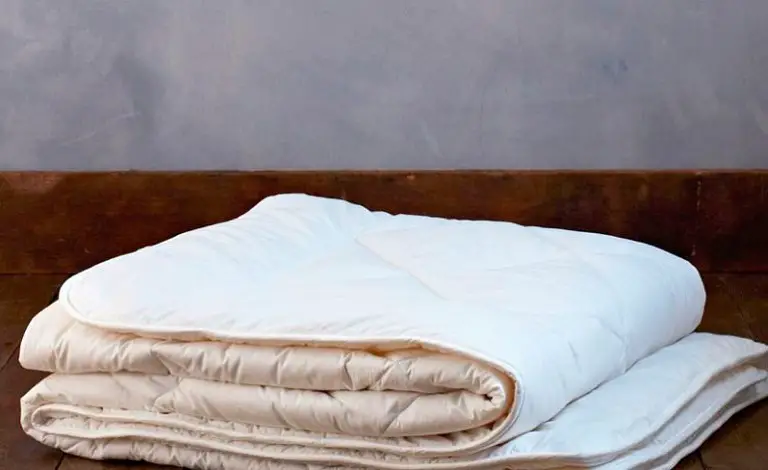Silk is the epitome of luxury, with its shiny appearance, premium price tag, and high-class allure. This often leads to questioning the consistency of silk’s function with its appearance.

Silk is known as a natural insulator. Apparently, it will keep you warm during the cooler months of the year due to its insulating properties. However, in summer it acts differently.
Does Silk Fabric Provide You Enough Warmth?
Silk is much more than just a gorgeous look for anyone who has just spent a little sum on something exquisite and smooth. Silk’s silky, draping texture acts as a fantastic comforter against the skin, keeping you toasty warm in cool months.
Attributes Behind Keeping You Warm
Silk is a raw insulator, it is fairly permeable, allowing heat to pass, and it will warm you up during the colder weather of the year due to its hydrophobic nature. This exquisite fabric is like having a natural thermostat ingrained in it, making it the finest all-season textile.
Silk is also hypoallergenic, and silky, and has the capacity to expel sweat rather than retain it, ensuring that bacteria do not become trapped in its fibers. Silk includes several essential amino acids that help to renew your hair and restore your skin, and it also has a few other health benefits.
You can virtually slide and spin without breaking your hair or creating creases in your skin because of the velvety surface. Thus it will not disappoint you if you’re seeking a fabric that will help you keep a comfortable temperature, is lightweight enough to layer for added warmth, and feels as smooth as butter on the skin.
1. During the Summer
The above attributes work well in winter or cold temperatures. You will never choose a fabric that will trap heat in hot months. But the amazing part is silk works for both.
Silk is a conundrum in that it can keep you cool in the summer and warm in the winter. The reason for this nearly miraculous capacity can be traced back to its natural fibers, notably their ability to control body temperature. Silk propagates excess heat as the temperature rises, keeping you feeling calm and fresh even on the warmest day.
2. Does Wet Silk Retain Warmth
Some textiles claim to keep you warm, but that promise only lasts as long as the weather does. Silk, on the contrary, keeps you warm even if it gets wet. Silk is an excellent base layer for outdoor adventurers.
Irrespective of how wet the silk gets, its capacity to absorb up to 30% of its own weight in humidity while draining it away means that the perspiration will stay sequestered in its fibers, keeping you warm but not sticky.
Comparison with Other Fabrics in Terms of Warm
Similarities and dissimilarities with other fabrics are described below –
1. Silk Vs Wool
Despite their striking differences in appearance and feel, silk and wool have a lot in common. Both are created from animal sources as wool is from sheep and goats’ fur and coats, and silk is from silkworm cocoons. Both offer a decent layer of insulation and comfort.
But, despite their similarities, when it comes to the fundamental question of which is warmer, one may overdo the other. The wool comes out on top. Silk has its benefits, and in some cold-weather settings, it may even have the upper hand.
After all, layers are crucial to keeping warm, and silk, with its lightweight texture and easy drape, is ideal for layering. However, a wool sweater will keep you cozier and warmer than a silk blouse.
2. Silk Vs Cotton
When it comes to being warm and comfortable, the capacity to insulate is the most critical feature a cloth can have. And cotton is a poor insulator. It has the incredible ability to absorb 2500 percent of its own weight in water, which is fantastic on hot, humid days but not so ideal in the cold.
Cotton loses its insulating characteristics as soon as it becomes a little wet, and it can even speed up the temperature distribution. Silk, on either hand, is well-known for its ability to maintain a consistent temperature.
Although it can absorb up to 30% of its weight in moisture, it drains away more than it retains, sustaining its insulating properties and providing warmth even when moist.
3. Silk Vs Cashmere
Cashmere wins out over silk, though silk has great heat-regulating characteristics. It’s because Cashmere is made from the underbelly of the Mongolian goat and is breathtakingly rare, luxuriously soft, exorbitantly expensive, and toasty warm.
It is eight times warmer than sheep’s wool, and like silk, it’s light enough to be worn in layers, further compounding its heat-giving abilities. However, 100% pure cashmere products are very hard to find.
4. Silk Vs Polyester
Silk and polyester are both textiles, but that’s where the similarities end. Polyester is a synthetic fabric that is nothing if not widespread. Silk is produced entirely of natural fibers and has a propensity for exclusivity.

In a straight-up contest between polyester and silk, silk wins in terms of warmth-to-weight-to-thickness, greater body-temperature regulation, moisture-wicking capacity, and odor resistance which is a significant bonus if you’re planning a lengthy trip.
5. Silk Vs Fleece
Fleece retains your body heat in tiny amounts, creating a beautiful insulating effect that will keep you warm even when the weather turns cold. It’s also hydrophobic by nature, which means it would rather reject water than consume it.
While it isn’t ideal for breathability, it is ideal for warmth. Fleece is a better buddy in arctic conditions than silk. It may not have the same exquisite elegance as silk, but it will keep you warm.
Frequently Asked Questions and Answers
- What is the ideal type of silk?
Mulberry silk fibers are the best on the planet; they are smoother, firmer, and have a more consistent color than any other type of silk. A single silk strand is more powerful than a steel fiber of a similar diameter. Simultaneously, silk charmeuse (the most common weave) is silky smooth and delightful to the feel.
- What are the different grades of silk?
Silk is rated on a scale of A, B, and C. Each letter refers to a distinct quality of silk products. The highest quality silk product is A, whereas the lowest grade silk product is C. The Number pushes the grading process even further.
- How can I recognize the quality of the silk?
Simply touch your silk to get a sense of how smooth it is. To the touch, real silk is entirely smooth, with a delicate, almost waxy sensation. Furthermore, if you crumble it up in your hand a little, you should hear a crackling sound, which should indicate that it’s the real deal.
Last Words
When it comes to the warmest fabric, silk may not be the obvious answer. However, there’s no doubt that if you want something elegant as well as cozy, silk will serve you quite well. By taking good care of your silk product, you can also make it last longer. So hopefully, you’ll never regret investing in good-quality silk.
Leave a Reply